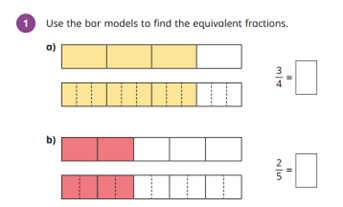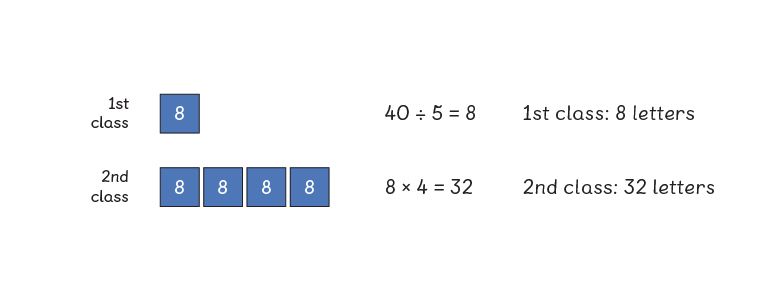Exploring Bar Version Illustration Techniques: A Comprehensive Guide to Envisioning Math Concepts
Bar model drawing methods function as a beneficial source for both instructors and pupils in visualizing mathematical principles. These versions streamline complex numerical partnerships, aiding in the understanding of enhancement, multiplication, reduction, and department. This overview outlines effective techniques for applying bar models, cultivating active engagement and real-world connections. As readers discover the sensible applications and training suggestions, they will certainly discover how these strategies can change their method to maths.
Recognizing the Essentials of Bar Version Illustration
Bar version drawing offers as a powerful aesthetic device in maths, facilitating the understanding of numerical partnerships and problem-solving techniques. This strategy entails standing for numbers and their connections via rectangle-shaped bars, making it much easier to envision operations such as enhancement, reproduction, reduction, and department. Each bar's length matches to a specific worth, permitting students to contrast quantities and comprehend percentages plainly.
To develop a bar version, one begins by identifying the problem's key elements, commonly simplifying right into components that can be aesthetically represented. In a basic enhancement problem, two bars can be drawn, with their lengths representing the addends. The combined length highlights the sum. In addition, bar designs can be adapted for more intricate issues, consisting of portions and ratios, by readjusting benches appropriately. Grasping these fundamentals lays a solid structure for reliable analytic and much deeper mathematical comprehension.
Advantages of Using Bar Versions in Math
Using bar versions in mathematics uses numerous benefits that boost understanding and comprehension. These graphes aid pupils in grasping complicated principles by breaking them down into convenient parts. Bar models supply a clear structure for illustrating partnerships between numbers, making abstract concepts much more concrete. They advertise a much deeper understanding of mathematical operations and help with problem-solving by allowing learners to envision the data they are collaborating with.
In addition, bar designs sustain the growth of crucial believing abilities, as pupils have to analyze and translate the visual info to attract conclusions. This technique urges energetic involvement with the material, enhancing retention and proficiency of mathematical concepts. By cultivating a solid structure in visual literacy, bar models equip learners to approach various mathematical challenges with self-confidence. Overall, the combination of bar models right into mathematics education and learning verifies valuable in growing both understanding and analytical abilities among pupils.
Using Bar Models to Addition and Subtraction
Bar versions work as a reliable tool for aesthetically standing for enhancement and reduction issues. By illustrating the partnership between numbers, they boost understanding and promote analytic. In addition, real-life applications of these designs can assist learners realize mathematical ideas in useful contexts.
Standing For Addition Visually
When students encounter enhancement and subtraction troubles, aesthetic help can greatly boost their understanding of these procedures. Bar models function as effective devices for representing addition. By separating a rectangular shape into sectors that correspond to the numbers included, students can envision the connection between the amounts. If a student needs to add 3 and 5, they can create a bar separated right into 2 sections: one area representing 3 and the other standing for 5. This clear depiction not only simplifies the enhancement procedure but likewise reinforces the idea of incorporating amounts. As students manipulate these visual help, they create a much deeper comprehension of addition, bring about improved analytical abilities and better self-confidence in their mathematical capabilities.
Reduction With Bar Versions
Reduction is often perceived as a more complicated procedure than enhancement, bar versions can properly clarify this procedure for pupils. By aesthetically standing for the amounts entailed, trainees can much better comprehend exactly how numbers associate to each other. In a bar design for subtraction, one bar represents the total, while another suggests the quantity being subtracted. This aesthetic distinction helps students realize the principle of "eliminating." As an example, if a bar reveals 10 systems, and another bar representing 4 devices is gotten rid of, trainees can easily see that 6 devices continue to be. This technique not only cultivates understanding of reduction but additionally help in establishing analytical abilities, enabling students to envision their mathematical reasoning and enhance their total comprehension of mathematical principles.
Real-Life Application Instances
Recognizing reduction through bar models lays a foundation for using these strategies in real-life scenarios. In different contexts, such as budgeting or buying, people can picture just how much cash stays after costs. If a person has $50 and spends $20, a bar design can stand for the overall quantity and the spent part, illustrating that $30 is left. In addition, parents can utilize bar models to assist youngsters understand exactly how many even more things need to be included in finish a set, such as having three apples and requiring five. This graph streamlines complicated troubles, facilitating comprehension and retention. Ultimately, bar versions act as efficient devices in everyday decision-making, enhancing mathematical understanding in functional scenarios.
Picturing Reproduction and Department With Bar Models
In checking out the application of bar designs for reproduction and department, it is important to grasp their foundational ideas. Building reproduction versions allows learners to visualize relationships between numbers, while efficient division approaches can be highlighted through these aesthetic aids. This method boosts comprehension and analytical skills in mathematics.
Comprehending Bar Models
Bar designs serve as an effective aesthetic tool for illustrating the ideas of multiplication and department. They enable students to represent mathematical relationships in an organized style, facilitating a much deeper understanding of these operations. In reproduction, bar models display groups of equivalent dimension, permitting individuals to imagine the total quantity when combining these groups. Conversely, in department, bar versions help show just how an overall is divided into smaller sized, equal parts, clarifying the idea of partitioning. By utilizing these aesthetic help, trainees can realize the underlying principles of reproduction and division much more successfully. This technique not just enhances understanding yet likewise supports analytic abilities, making bar versions a vital possession in mathematical education.
Building Multiplication Models
Constructing multiplication versions utilizing bar diagrams uses a clear technique for picturing the procedure of reproduction. These models enable students to stand for multiplication as teams of equal components, making abstract principles a lot more concrete. To illustrate (3 times 4), a student can draw one bar divided right into 3 equal sectors, each representing 4 units. In addition, producing a second bar with the exact same size reinforces the understanding of duplicated addition, as each segment represents one team. This graph not only aids in understanding reproduction but likewise boosts problem-solving abilities. By employing bar versions, students can much better understand connections in between numbers and develop a durable foundation for much more complex mathematical concepts, causing boosted confidence in their abilities.
Picturing Department Strategies

Addressing Word Issues Utilizing Bar Version Techniques

For instance, in a problem involving enhancement and subtraction, pupils can attract separate bars for every amount and then manipulate them to find the option. This process not only makes clear the trouble however likewise cultivates a much deeper theoretical understanding. Bar models can be adapted for various kinds of word issues, making them functional across different mathematical topics. Inevitably, making use of bar models can substantially improve pupils' analytical abilities by providing a clear aesthetic pathway to reach the correct answer.
Integrating Bar Models in Various Math Topics
Bar designs can be perfectly integrated right into numerous math subjects, boosting pupils' understanding of ideas beyond standard arithmetic. In algebra, these visual tools help in representing equations and inequalities, making it possible for students to envision partnerships in between variables. When taking on geometry, bar versions can illustrate the residential properties of shapes and spatial reasoning, aiding pupils understand ideas like location and boundary successfully. In stats, bar versions assist in the analysis of data sets, enabling pupils to contrast quantities and acknowledge trends aesthetically. Additionally, incorporating bar designs within measurement topics aids in recognizing devices and conversions by providing a concrete depiction of quantities. By using bar models across various mathematical locations, educators can promote a deeper understanding of intricate principles, thus enhancing analytic abilities and promoting essential thinking (bar model drawing techniques). This convenience shows the utility of bar models as a fundamental device for trainees in their mathematical trip
Tips for Mentor Bar Models Effectively
Incorporating bar versions into mentor techniques calls for thoughtful methods to maximize their effectiveness. Educators ought to start by introducing bar versions with easy, relatable instances that students can easily comprehend. This assists to build confidence and knowledge with the principle. Gradually boosting the intricacy of problems allows students to use their abilities gradually. Furthermore, teachers ought to urge pupils to create their own bar designs, advertising active interaction and ownership of their learning.
Including collective activities can likewise enhance understanding, as trainees talk about and solve issues in teams. Continual feedback is essential; teachers need to give useful discourse on trainees' bar model representations to guide improvement. Connecting bar designs to real-life circumstances strengthens their significance, assisting pupils see the practical applications of their mathematical abilities. By applying these strategies, educators can efficiently harness the power of bar designs in their mathematics direction.
Often Asked Concerns
Can Prevent Versions Be Utilized in Various Other Topics Besides Mathematics?
Bar designs can without a doubt be utilized in numerous subjects past mathematics. They properly show ideas in science, social researches, and language arts, assisting to visually stand for connections, processes, more info and ideas for enhanced understanding throughout disciplines.
What Age Is Finest Matched for Knowing Bar Designs?
Bar models are best matched for children ages 7 to 12, as they create concrete reasoning skills during this duration (bar model drawing techniques). At this age, students can effectively comprehend abstract principles via graph and analytic strategies
Exist Digital Equipment for Creating Bar Designs?

How Can I Evaluate Student Comprehending of Bar Versions?
Examining trainee understanding of bar designs can involve quizzes, empirical evaluations, and group conversations. Educators might additionally assess trainees' finished designs and their ability to clarify their thinking, ensuring a complete assessment of understanding.
What Are Usual Blunders When Making Use Of Bar Versions?
Typical blunders when using bar models consist of misstating amounts, stopping working to accurately identify bars, confusing addition and reduction, overlooking to use consistent scales, and neglecting the importance of clear visual separation in between various aspects.
In addition, bar designs can be adjusted for a lot more complex issues, consisting of portions and ratios, by readjusting the bars as necessary. Reduction is typically regarded as a much more complicated procedure than addition, bar designs can properly clarify this procedure for students. In a bar version for subtraction, one bar represents the total amount, while an additional indicates the quantity being deducted. If a bar shows 10 systems, and an additional bar standing for 4 devices is gotten rid of, students can quickly see that 6 devices remain. When dividing a total right into equivalent teams, trainees can draw a long bar to represent the whole and then segment it into smaller bars that suggest each group.